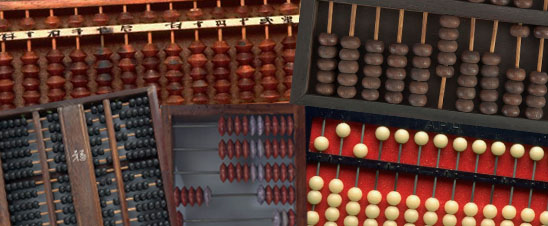To teach children basic arithmetic, nineteenth century teachers used numeral frames like this one. They resemble a Russian abacus, in that beads move crosswise.
- Description
-
To teach children basic arithmetic, nineteenth century teachers used numeral frames like this one. They resemble a Russian abacus, in that beads move crosswise. However, each bead represents a unit digit (unlike the abacus, where beads in different rows or columns have different place values).
-
Soldiers returning from Russia after the Napoleonic Wars introduced this kind of abacus into France. In England, teacher and educational reformer Samuel Wilderspin promoted its use. Educators from both France and England brought it to the U. S., where it began to sell commercially in the late 1820s.
-
Some numeral frames were purchased and others homemade. The device was used to teach counting, simple addition, multiplication, and fractions. Most early numeral frames had 12 or 10 beads in a row. This one has 8 parallel copper wires, each with 18 beads. The instrument was used in Mexico. It came to the Smithsonian in 1979. There are no maker’s marks.
-
Reference: P. A. Kidwell, Amy Ackerberg-Hastings, and D. L. Roberts, Tools of American Mathematics Teaching, Baltimore: Johns Hopkins University Press, 2008, pp. 87-104.
- Location
-
Currently not on view
- ID Number
-
1979.0693.01
- catalog number
-
1979.0693.01
- accession number
-
1979.0693
